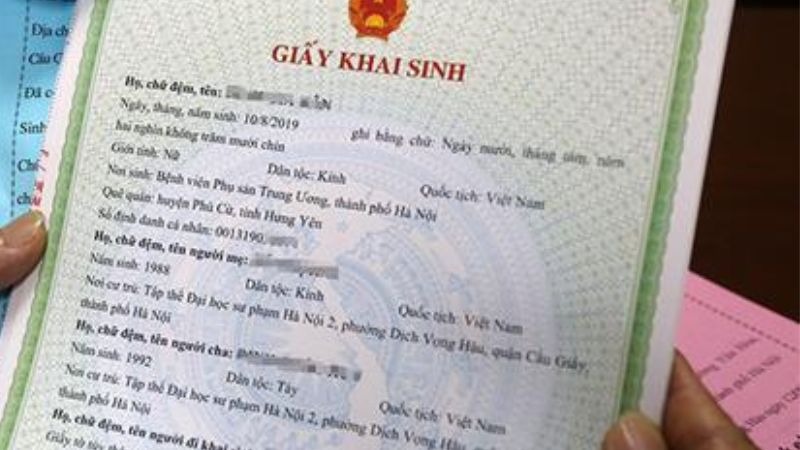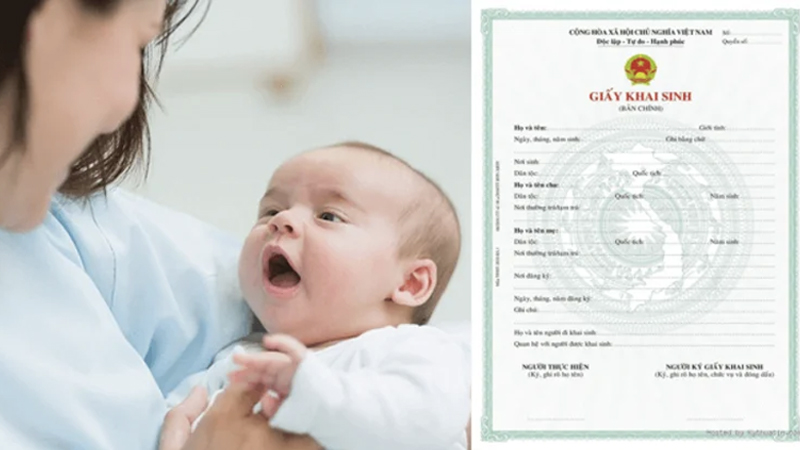The Ultimate Guide to Birth Registration for Children: Everything You Need to Know
# The Deadline and Latest Updates
The birth registration deadline for children is set at 60 days from the date of birth. To streamline processes for citizens, the birth registration procedure has been linked with various other administrative steps, resulting in reduced processing times. Let’s delve into the latest updates on birth registration for 2021.
# What is a Birth Certificate and Why is it Important?

According to Clause 6, Article 4 of the Law on Household Registration 2014, a birth certificate is an official document issued by a competent state agency upon an individual’s birth registration. This certificate includes fundamental information about the individual as outlined in Clause 1, Article 14 of the same law.
Article 6 of Decree No. 123/2015/ND-CP further emphasizes the legal value of birth certificates:
1. Serving as the original household record document for the individual.
2. Ensuring consistency across all individual dossiers and documents containing personal information, such as name, date of birth, gender, ethnicity, nationality, place of origin, and parental relations, with the information on the birth certificate.
3. Requiring the head of the agency or organization managing the dossier to adjust any discrepancies between the individual’s dossier or documents and the birth certificate.
# Birth Registration Procedure for Children: Documents and Process
Documents Required:
Based on Decision No. 1872/QD-BTP of 2020, effective from September 4, 2020, here are the documents needed for birth registration:
– Declaration form
– Original birth certificate
– Power of attorney as prescribed by law in cases of authorized birth registration
If simultaneous recognition of paternity, maternity, and filiation is sought, proof of these relations must be provided.

The person registering the birth must present their identification documents, such as a passport, identity card, citizen ID card, or other photo ID, along with proof of residence to establish their authority for birth registration and recognition of parental relations.
For applications submitted via the postal system, enclose certified copies of the mentioned documents.
Notes on Document Submission:
– The application receiver must not demand the presentation of originals if the applicant provides certified copies from the original book or certified true copies.
– Similarly, if the applicant submits only photocopies but presents the original for verification, do not require them to submit additional copies. Instead, check, compare, and sign the photocopy to confirm its authenticity.
– For documents presented during household registration, compare the information with the declaration form, store the information, and return the documents to the presenter without requesting additional copies.

The application receiver is responsible for accepting complete and valid household registration application dossiers per the law and must not impose additional document requirements beyond what is legally mandated.
If the household registration applicant provides a written commitment regarding the application, the registration authority must explain their responsibility and the legal consequences of making a false commitment.
Birth Registration Process:
# In-Person Birth Registration Procedure:
After gathering the necessary documents, follow these steps for birth registration:
Step 1: Submit the documents to the People’s Committee at the communal level where either parent resides. If the parent’s residence cannot be determined, submit the application at the People’s Committee of the child’s actual residence.
Step 2: The application receiver will check the entire dossier, compare the information, and verify the validity of the submitted documents. If the dossier is complete, they will issue a receipt with the date and time for collecting the birth certificate. If incomplete, the applicant will be guided on supplementing the dossier per regulations.

Once the complete dossier is received and the recognition of parental relations is confirmed without disputes, the justice-household registration official will report to the Chairman of the Commune-level People’s Committee. The official will then enter the necessary information, update the birth details, and guide the applicant through checking and signing the documents.
Finally, the Chairman will issue the birth certificate and the Extract of Recognition of Paternity, Maternity, and Filiation to the applicant.
# Online Birth Registration Procedure:

To initiate the online birth registration process, access [https://dichvucong.gov.vn/p/home/](https://dichvucong.gov.vn/p/home/), and log in with an account provided by the Public Service Portal or Vietnam Post. Select your province/city, district/town, and ward/commune, and click “Agree” to proceed.
From the list of public services, choose “Online Submission under Birth Registration (Commune-level).” After agreeing, follow the instructions on the page of Online Public Services of the provinces and centrally-run cities to complete the birth registration.
# Birth Registration for Children in Special Cases
Birth Registration for Abandoned Children:

The person who discovers an abandoned child must protect the child and immediately notify the People’s Committee or the commune-level police in the area where the child was found. If the child is abandoned at a medical facility, the facility’s head must notify the authorities.
Upon receiving the notification, the Chairman of the Commune-level People’s Committee or the Chief of the Commune-level Police will organize a report on the abandoned child, and the Commune-level People’s Committee will hand over the child to an individual or organization for temporary care as per the law.
The report must include:
– The time and place where the child was found
– Distinctive features like gender, physical condition, and health status
– Any property or objects found with the child
– Full name, identity, and residence of the person who discovered the child
After the report is made, the Commune-level People’s Committee will post a notice at their headquarters for seven consecutive days. If no information about the child’s biological parents surfaces, they will notify the caregiver to proceed with the birth registration. The caregiver is then responsible for registering the child’s birth as per normal procedures.
Birth Registration in Some Special Cases:
The child’s surname, middle name, and given name will be determined per civil law. If the child’s date, month, and year of birth, and place of birth cannot be ascertained, the date and month of discovery will be used as the birth date, and the year will be based on their physical condition. The place of birth will be where the child was found, and their nationality will be Vietnamese. The sections on parents and ethnicity in the birth certificate and household register will be left blank, with a note stating, “Child was abandoned.”
Birth Registration for Children with Undeterminable Parents:

The Commune-level People’s Committee where the child resides is responsible for registering the birth of children whose parents cannot be determined.
– If only the father or mother is undeterminable, the child’s surname, ethnicity, place of origin, and nationality will be based on the known parent. The section for the unknown parent in the household register and birth certificate will be left blank. If paternity is established at the time of birth registration, the Commune-level People’s Committee will handle both paternity establishment and birth registration.
– If both parents are undeterminable, the individual or organization temporarily caring for the child will be responsible for birth registration. The procedures will follow those for abandoned children, with the household register noting, “Child’s father and mother cannot be determined.”
Birth Registration for Children Born Through Surrogacy:
The requester must submit documents per the standard birth registration procedure and provide a confirmation letter from the medical facility that performed the surrogacy procedure. The child’s parents’ sections in the birth certificate will be determined based on the couple who requested surrogacy.
# Frequently Asked Questions about Birth Certificates
Can I give my child my maiden name?
According to Decree No. 123/2015/ND-CP guiding the Law on Household Registration, there are two scenarios in which a child can bear the mother’s maiden name:
Case 1: Parental Agreement
Per Clause 1, Article 4 of Decree No. 123, the child’s name and ethnicity are determined by agreement between the parents. If they cannot reach an agreement, custom will dictate these choices.
Case 2: Undeterminable Father
Clause 2, Article 15 of Decree No. 123/2015/ND-CP stipulates that if the father cannot be determined, the child’s surname, ethnicity, place of origin, and nationality will be based on the mother’s information. The father’s section in the household register and birth certificate will be left blank.
Conclusion
Birth registration is a crucial process that ensures children’s legal existence and access to various rights and services. This guide has provided an in-depth overview of the birth registration procedure, including special cases and frequently asked questions. Remember to refer to the latest regulations and updates, as procedures may evolve over time.
Fastest and Most Accurate Child Personal Identification Number Lookup Guide
How can parents look up the personal identification number for their child when the child is not old enough to get a citizen identification card? This is a question that many parents are currently concerned about. Let’s find out how to look up the personal identification number for children in the article below.




































